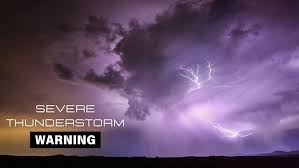Understanding Severe Thunderstorm Warnings: Key Insights

Introduction: The Importance of Severe Thunderstorm Warnings
Severe thunderstorm warnings are critical alerts issued by meteorological services to inform the public about potentially hazardous weather conditions. With climate change increasing the frequency and intensity of storms, understanding these warnings can significantly enhance safety and preparedness for communities. In Canada, severe thunderstorms can lead to damaging winds, heavy rain, and hail, affecting millions of residents.
Current Events: Recent Thunderstorm Activity
In the past week, several regions across Canada have been under severe thunderstorm warnings, particularly in Ontario and Alberta, as meteorologists predicted the possibility of intense storms that could bring damaging winds exceeding 90 km/h, heavy downpours leading to flash flooding, and hail. For instance, on July 25, Environment Canada reported multiple warnings across southern Ontario, urging residents to seek shelter and avoid travel during storm peaks.
What to Expect During a Severe Thunderstorm
Severe thunderstorms can produce a variety of dangerous weather phenomena. Key features include:
- High Winds: Winds can cause property damage and lead to fallen trees or power lines.
- Heavy Rain: Rainfall can lead to flash flooding, posing risks to vehicles and pedestrians.
- Hail: Larger hailstones can damage crops, vehicles, and buildings.
These storms typically develop along cold fronts during the summer months, but they can occur at any time of the year.
Preparedness Tips for Citizens
As severe weather becomes increasingly common, preparedness is key for individuals and families. Here are some essential tips:
- Stay informed by monitoring local news and weather apps for real-time updates and alerts.
- Create an emergency kit that includes essentials such as flashlights, water, non-perishable food, and medical supplies.
- Have an emergency plan in place that outlines where to go and how to communicate with family members during severe weather events.
Conclusion: The Significance of Awareness and Preparation
Severe thunderstorm warnings serve as a vital component of public safety, helping communities react swiftly to potential threats. As climate change continues to influence weather patterns, being informed and prepared can make a substantial difference in mitigating the impacts of severe weather events. Residents are urged to pay attention to warnings and take action to protect themselves and their property. With vigilance and readiness, communities can work towards minimizing the risks posed by severe thunderstorms.









